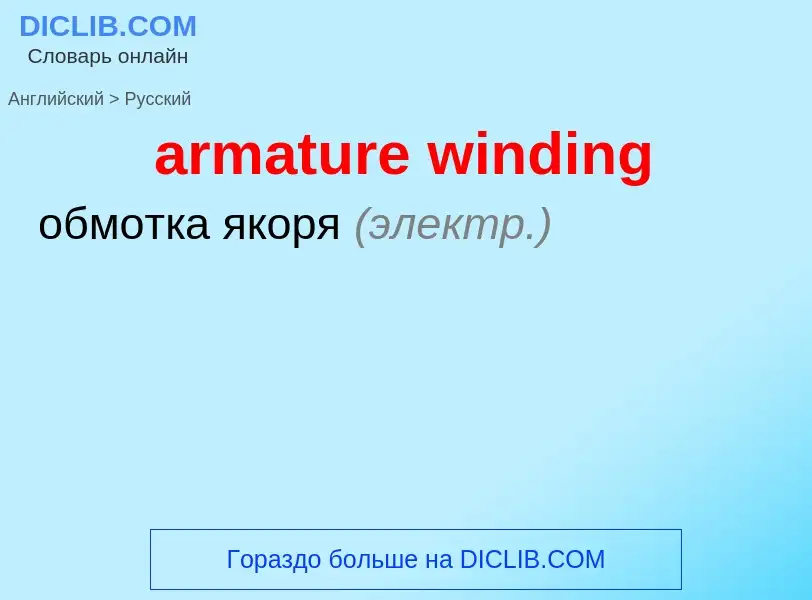Перевод и анализ слов искусственным интеллектом ChatGPT
На этой странице Вы можете получить подробный анализ слова или словосочетания, произведенный с помощью лучшей на сегодняшний день технологии искусственного интеллекта:
- как употребляется слово
- частота употребления
- используется оно чаще в устной или письменной речи
- варианты перевода слова
- примеры употребления (несколько фраз с переводом)
- этимология
armature winding - перевод на русский
общая лексика
петлевая обмотка
общая лексика
обмотка всыпная
Определение
Википедия

In electrical engineering, the armature is the winding (or set of windings) of an electric machine which carries alternating current. The armature windings conduct AC even on DC machines, due to the commutator action (which periodically reverses current direction) or due to electronic commutation, as in brushless DC motors. The armature can be on either the rotor (rotating part) or the stator (stationary part), depending on the type of electric machine.
The armature windings interact with the magnetic field (magnetic flux) in the air-gap; the magnetic field is generated either by permanent magnets, or electromagnets formed by a conducting coil.
The armature must carry current, so it is always a conductor or a conductive coil, oriented normal to both the field and to the direction of motion, torque (rotating machine), or force (linear machine). The armature's role is twofold. The first is to carry current across the field, thus creating shaft torque in a rotating machine or force in a linear machine. The second role is to generate an electromotive force (EMF).
In the armature, an electromotive force is created by the relative motion of the armature and the field. When the machine or motor is used as a motor, this EMF opposes the armature current, and the armature converts electrical power to mechanical power in the form of torque, and transfers it via the shaft. When the machine is used as a generator, the armature EMF drives the armature current, and the shaft's movement is converted to electrical power. In an induction generator, generated power is drawn from the stator.
A growler is used to check the armature for short and open circuits and leakages to ground.



